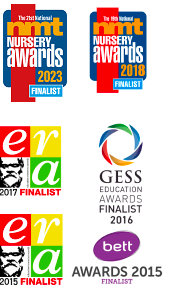Reaching and connecting with parents is vital for the success of any Early Years setting. Digital marketing can be the key to opening doors, and creating a bridge between your setting and the community it serves. But what exactly is digital marketing, and why is it crucial for Early Years settings?
What is Digital Marketing?
Digital marketing encompasses a range of online strategies and tools designed to promote and elevate an organisation. For Early Years settings, this means using digital platforms such as social media and websites to communicate, engage, and build relationships with parents, caregivers, and the community at large.
Why is Digital Marketing Important for Early Years Settings?
Visibility and Connection:
In a world where information is at our fingertips, digital marketing ensures that your Early Years setting is visible to parents actively seeking educational and nurturing environments for their children.
Community Engagement:
Digital marketing facilitates direct and real-time communication with parents. It allows you to share your setting’s values, achievements, and daily activities, fostering a sense of community and trust.
Information Access:
Parents often turn to online platforms for information. Digital marketing ensures that your Early Years setting is not only discoverable but also provides accessible and relevant information about your programmes, staff, and enrolment procedures.
Building Trust:
Through engaging content and transparent communication, digital marketing helps build trust with parents. By showcasing the unique aspects of your setting, you establish a connection that goes beyond the physical walls of the institution.
Competitive Edge:
With many parents relying on digital channels for research and decision-making, a robust digital marketing strategy provides a competitive edge. It positions your Early Years setting as forward-thinking, accessible, and responsive to the needs of modern parents.
As you can see, embracing Digital Marketing can make a world of difference to the success of your setting. But where do you start? Let’s break it down into two areas: Social Media and Websites.

Social Media:
Imagine social media as your virtual bulletin board – a place where parents gather information and build trust. There are many reasons why social media matters in digital marketing, here are some of the key points.
- Connect with Parents: Be where parents already are. Social media is where they seek and share information.
- Build Trust: Sharing educational, inspiring, and fun content helps parents trust your Early Years setting.
- Be Found: When 28% of users use social media to research brands, your presence is crucial. Your setting may want to be on several different platforms, this will depend on what your target audience is and the platforms they use most. We are going to focus specifically on Facebook and Instagram (the Meta channels) but you may want to be on LinkedIn or X (previously Twitter) too.
Quick Wins on Social Media:
Making your social media shine is easier than you think! Here are some quick wins that will help you boost the effectiveness of your social media.
General quick wins:
- Use a high-quality logo and header image. With social media being used across a variety of devices it is important to have a logo and header image that will reflect well across a variety of sized screens. The best way to do this is by making sure you are using high-quality images.
- Post consistently. The optimal amount you should post will vary per channel, but what matters more than quantity is the quality and consistency of your posts. If you only have the resources to post once a week, make sure that you are doing so consistently so that the platform you are posting on recognises that you are an active account.
- Develop a consistent posting style. It’s important that users of social media recognise your brand. Posting similar style posts and using a consistent tone of voice is a great way to establish your brand personality.
Facebook:
- Fill in your page information completely. Adding in your website information, a bit about what your setting does, and an address and phone number allows parents to understand more about your setting at a glance.
- Add a call-to-action button. By adding a button that links to your website or allows viewers to message your page directly you are encouraging them to interact with your brand from the moment they visit your page.
- Join local Facebook groups. Engaging in these groups allows you to connect with parents, caregivers, and local community members.
- Use hashtags sparingly. While Facebook doesn’t rely on hashtags as heavily as some other platforms, using them sparingly can still be effective. Incorporate one or two relevant hashtags in your posts to increase discoverability.
Instagram:
- Use a link tool. Instagram only allows you to add a limited number of links to your page’s bio. Consider using link tools like Linktree to create a menu of links for easy navigation.
- Write detailed captions with keywords. Incorporate relevant keywords related to Early Years education in your post captions as this enhances the discoverability of your content.
- Use 3-5 hashtags per post. Avoid overusing hashtags, but strategically include 3-5 relevant ones to increase the discoverability of your posts.
- Utilise reels to increase reach and engagement. Use Instagram’s algorithm, as Reels often receive higher visibility and engagement.
- Save your best stories to highlights. This allows visitors to quickly access important information, such as enrollment details, events, or special programs.
Social Media Content Ideas:
Bring your Early Years setting to life with these simple content ideas:
- Virtual Tours
- Meet the Team Moments
- Celebrating Milestones
- Storytime Sessions
- Happy Parent Testimonials
- Messy Play Before and After
- Creative Crafts
- Home Activity Ideas
- Community Involvement Highlights
Understanding the Numbers:
Social media isn’t just about having followers. Sure, seeing the number of people who follow your content wrack up is great, but it only matters if they are seeing and engaging with your content. Consider social media as a platform where your stories are shared. To gauge the impact of these stories, utilise tools such as ‘Insights’ or ‘Analytics.’ These tools serve as analytical lenses, providing valuable data on the demographics and interests of your audience
Social media engagement is like a collective conversation. It encompasses the likes, comments, and shares your posts receive. This interaction signifies if your content resonates with your community. Observing engagement is crucial, much like noting how many people actively participate in a discussion. A higher engagement rate indicates that your posts are not only being seen but are eliciting a response, contributing to the relevance of your digital presence.

Websites:
Your website is the online equivalent of a shop or a showroom. It’s where parents come for essential information about your business and what you do. There are several important factors to creating a successful website, including:
- SEO: Using words on your site that parents might use when searching for nurseries makes it more discoverable in search engine results.
- User Experience: Make sure your website is easy to navigate, especially on mobile devices. When parents can find what they need quickly, it makes their visit enjoyable and efficient.
- Content: Your content should be reliable and authoritative, and provide the information parents seek. High-quality content builds trust and makes your digital home a go-to resource.
SEO Basics:
Targeting Keywords: Consider SEO (Search Engine Optimization) as the language that helps parents find your website. Think about the words parents would type into search engines when looking for settings like yours. By using these words on your website, you make it easier for parents to discover your business.
Quick Tips:
- Use simple, everyday words that parents commonly use.
- Imagine you’re a parent searching for a nursery – what words would you type?
User-Friendly Design:
Picture your website as a well-organised bookshelf in a library. A user-friendly design ensures parents can easily pick the right “books” (information) from the shelf. This is crucial, especially when parents are using their mobile phones. Make the journey through your website smooth and enjoyable.
Quick Tips:
- Keep menus and buttons clear and easy to click.
- Test your website on different devices to make sure it works well everywhere.
Extra Considerations:
Ensure your website is safe, accessible to everyone, and follows the rules set by the digital community. This creates a positive and trustworthy environment for parents visiting your website.
Quick Tips:
- Implement security measures to protect users’ data, and make sure you comply with GDPR (and the DPA if you’re in the UK).
- Make sure your website is accessible to people with different abilities. You can reference the Web Content Accessibility Guidelines for more on this.
- Follow ethical guidelines and legal regulations for online spaces.
Understanding Website Metrics:
Imagine your website as a bustling marketplace, and website metrics are like your stall’s performance report. Tracking these metrics helps you understand how well your digital space is working.
Google Analytics (GA4) is a free tool that reveals valuable insights about your website. It tells you where your visitors come from and how they interact with your website. There are quite a few metrics to look at on Google Analytics but these are some key ones to look out for.
- Where Are Your Users Coming From? – UTM Tracking: Utilize GA4’s UTM parameters to pinpoint precisely where your visitors originate. UTM parameters are snippets of text you add to the end of a link that show where the link came from. Whether visitors arrive through organic search, paid ads, or social media posts, understanding these referral sources is like understanding the different roads that lead to your digital marketplace.
- Referrals and Landing Pages: GA4 allows you to track referrals and landing pages (pages a visitor opens your site on), providing insights into which external websites are directing traffic to your site and which pages are most frequently accessed.
- How Are They Using the Website? – Engagement Metrics: Gauge user interaction and satisfaction through metrics like engagement rate, events tracking, and path/funnel explorations. These metrics offer valuable insights into how visitors navigate your website, helping you tailor your content and design to enhance user experience.
- Are You Generating Enquiries and Data? – Conversion Tracking: Measure the effectiveness of your digital marketing efforts by tracking conversions, such as form submissions. Additionally, monitor conversion rates to assess the percentage of visitors who take desired actions on your website.

By embracing these digital marketing strategies, you can open new doors for your Early Years setting. Connect with parents, showcase your uniqueness, and build a community that believes in the growth and development of your little ones.

